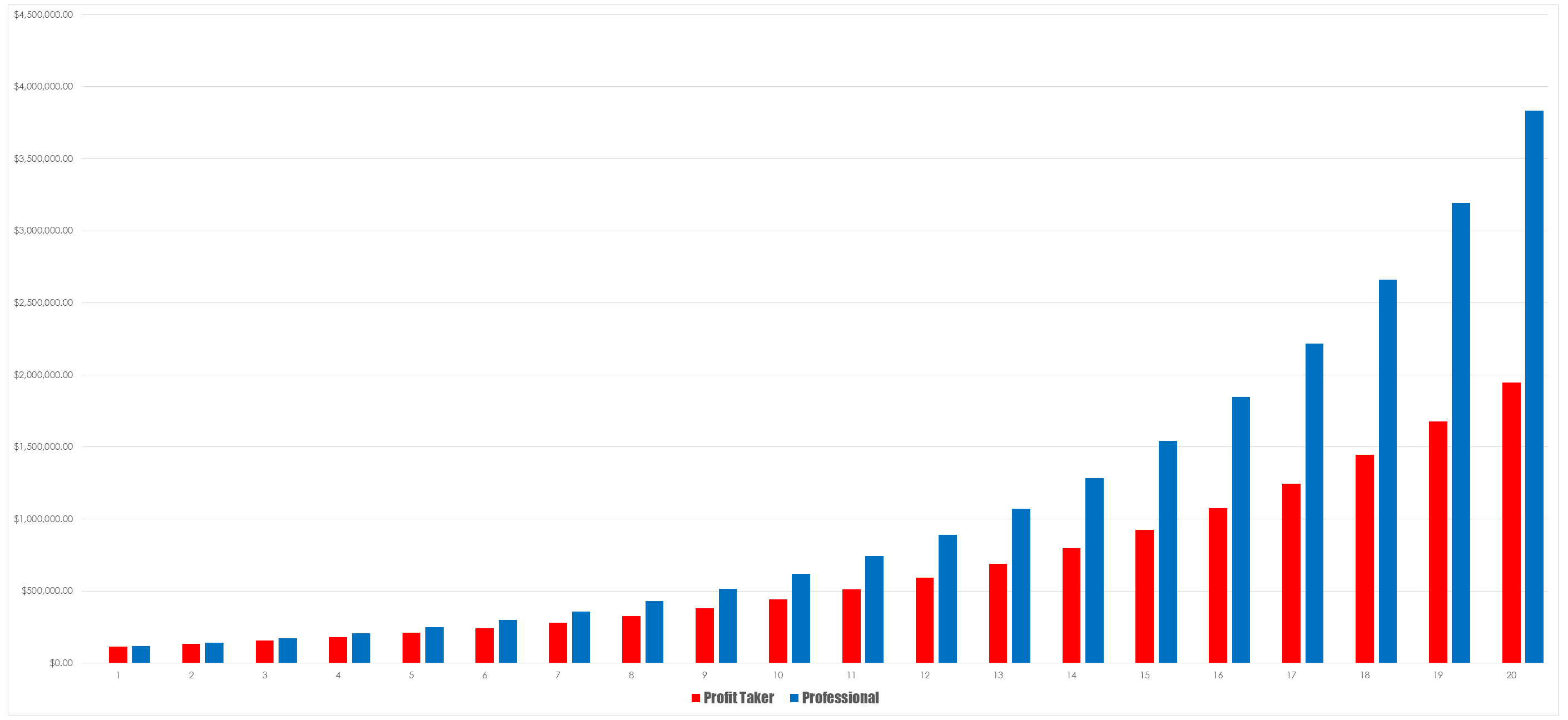Recently on LinkedIn I saw a piece that was extolling virtues of profit taking, a strategy I am vehemently opposed to. The piece used words such as greedy to try and generate some form of emotional response in the reader – as if being greedy is a bad thing. In trading it is the only thing.
The market so rarely gives you an opportunity to partake in sustained move that it is incumbent upon you financially and emotionally to try and derive as much benefit from these moves as possible through any means possible. To do anything else is to short circuit your own performance because trading systems are paid for by the handful of outlier trades that they generate. Profit taking is a good strategy for brokers since it is a revenue generator and it sounds so logical to take some money off the table but it is a passport to mediocrity and a new BMW for your broker.
Within the business of trading we have few mechanisms by which we can cut our costs – the most obvious of which is to try and minimise the expenses of doing business. Needless trading is a drag on performance. As a blunt example consider two trading systems. The first engages in the habit of what I would call entertainment trading – that is they tinker around the edge of the system for fun. This fun comes at a cost. The systems below have identical starting parameters of an initial capital of $100,000 and an annual compound return of 20%. However, our entertainment seeker spends an additional $250 per month on needless transactions.
Over the life of the account our tinkerer spends $60,000 in fees on needless transactions which does not sound like much. However, this $60,000 actually costs them $614,048.49 which is a substantial amount of money. The breakdown of this performance can be seen below.
However, the piece I read suggested that traders should take at lest 40% off the table when in profit – it didnt actually define what being in profit would be but I thought I would look at what this would do to long term performance. In presenting this I am being a little mischievous (and simple) because I am opting for a blunt comparison of saying that our standard account has a return of 20% whereas our profit taker has their return diminished by 20% . Taking 40% off the table would simply cripple the account.
The matter is a little more complicated than this but it will serve as a proof of concept.
I understand the emotional and psychological appeal of taking money off the table, after all you cannot go broke taking a profit. Paradoxically it is been my observation that this is exactly how traders go broke because the flip side of wanting to take profits at the first opportunity is a profound reluctance to take losses at the first opportunity. Such accounts demonstrate the traditional pattern of small wins and large losses which is exactly the opposite of what is needed. Professional traders need their occasional massive wins to pay for all the small losses they encounter whilst waiting for the next big win.
The message is blindingly simple – ride your wins for as much as they are worth, minimise costs and leave as much money in the account for as long as possible.








Thanks as always Chris.
Well said Chris